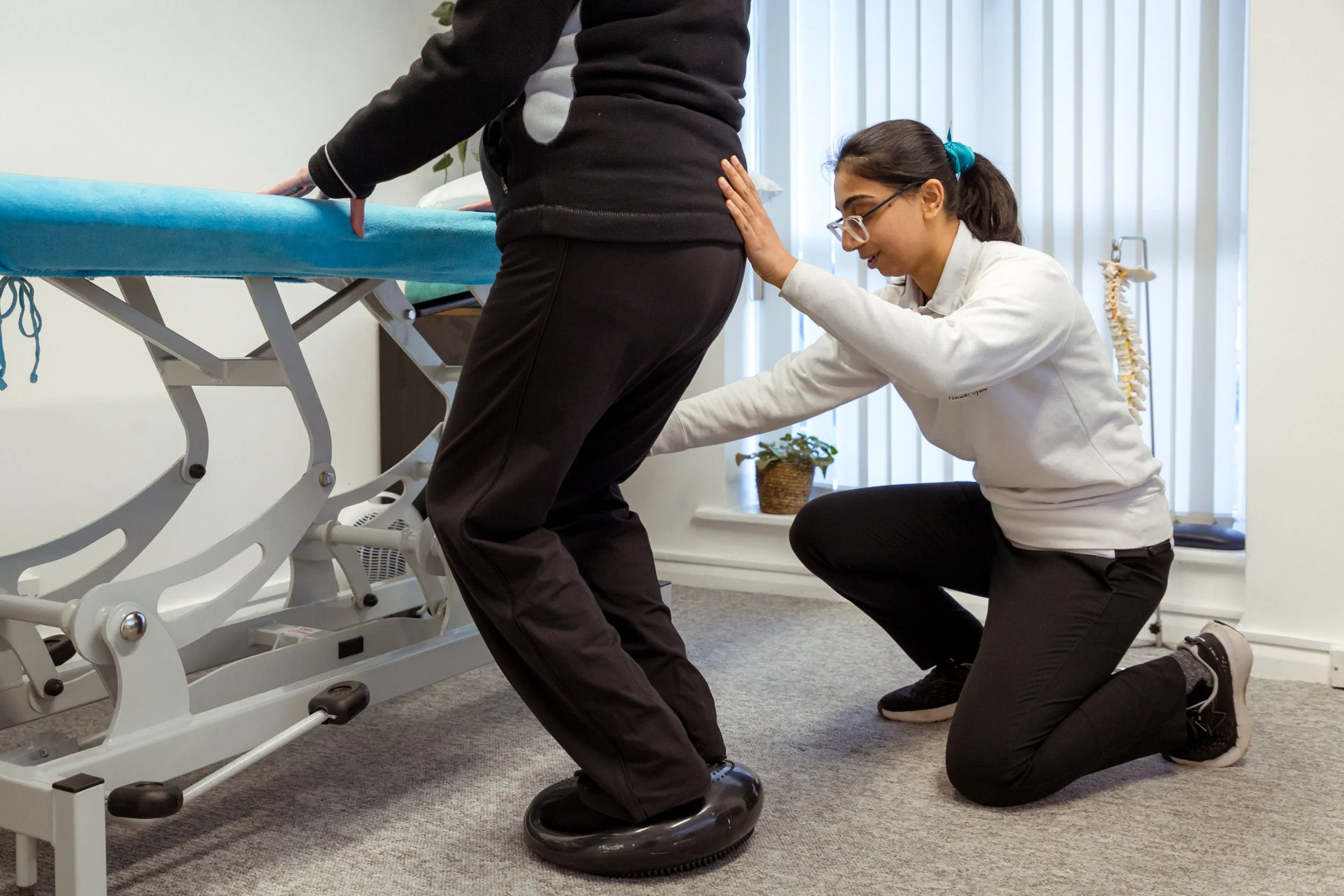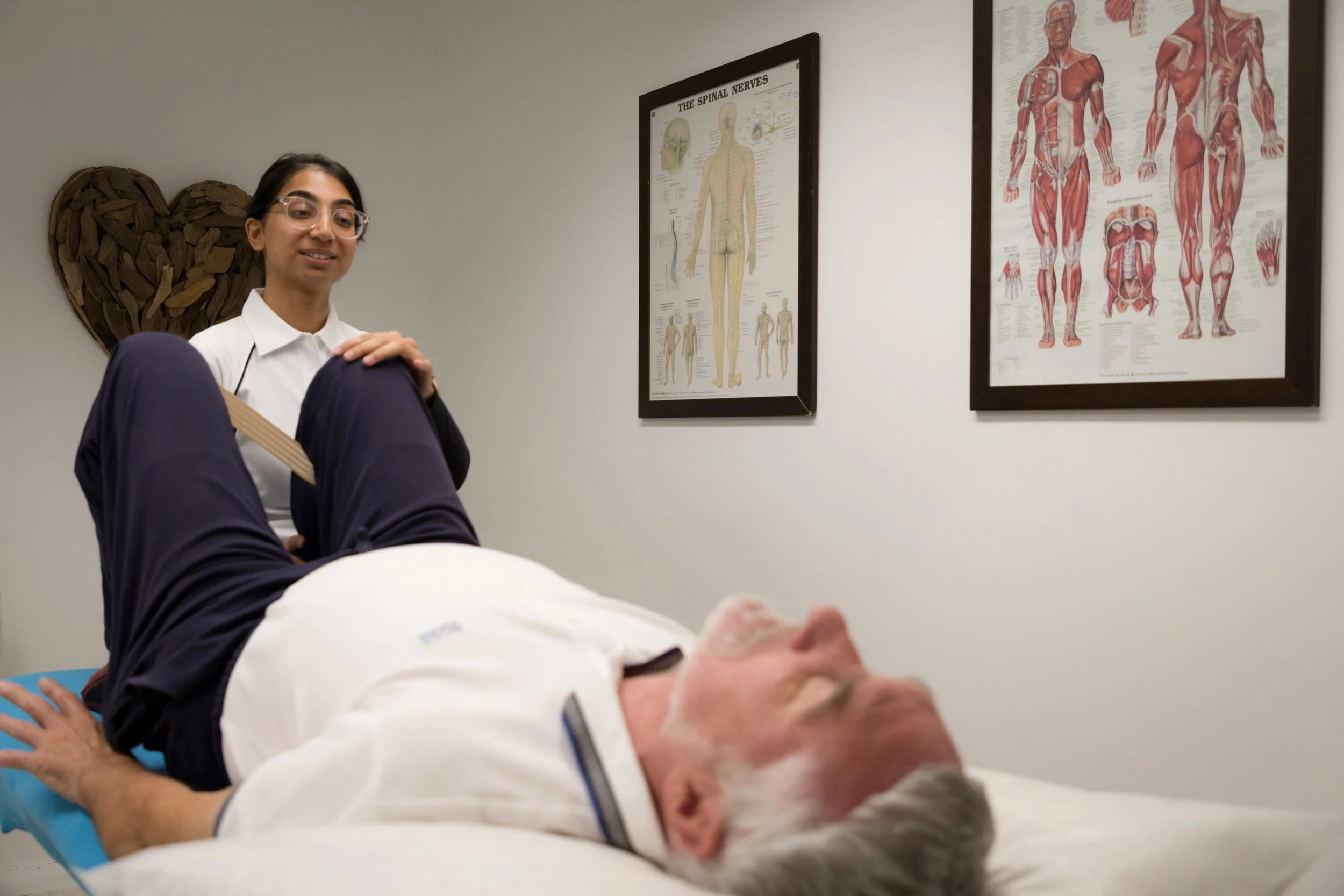Hip pain
There are many causes of hip pain, ranging from joint, bone, muscle, cartilage or bursa. We see them all at our clinic and here we’ll discuss what we can do to help you.
Each year, around 10% of adults in the UK report having hip pain, which can affect everyday activities like walking, climbing stairs, or sleeping. Your hip pain may have developed gradually over time, or it may have started suddenly after an injury or period of overuse.
In many cases, hip pain is mild and short-lived, resolving on its own within a few days or weeks. However, sometimes hip pain come become persistent or severe, and in some cases can progress to pain that radiates down your leg, groin, or buttock.
We are passionate about early assessment and treatment to help reduce symptoms, improve mobility, and prevent further damage.
YOU DON’T NEED TO GO AND SEE A GP FIRST!
Physiotherapists can assess and diagnose the cause of your hip pain and provide relief from the symptoms with treatment. We are also able to refer for investigations such as scans if we feel this is required.
We have much longer to speak to you about your hip pain than a GP does, and can help you to understand how to manage your symptoms more effectively.
How can physiotherapy help my hip pain?
A physiotherapy assessment aims to understand what is causing your hip pain and ensures we rule out any serious conditions. We can usually diagnose your hip pain using a series of movements and specialist tests. Physiotherapy treatment will target the affected structures in and around the hip.
We can use a combination of “hands on” techniques such as:
Massage for sore, tight or spasming muscles in the back, hips, buttocks and legs
Mobilisation/manipulation to improve stiff hip or spinal joints
Stretching techniques to reduce pressure through the hip muscles and nerves around your bottom and lower back
Acupuncture for pain and tightness in the muscles of the back, buttocks and hips
We are passionate about not just giving you a “quick fix” for the pain, and will always follow up any hands on treatment with a tailored exercise programme to ensure the benefits of your sessions are long lasting.
We believe that knowledge is power, and we strive to give you all the information you need to understand your hip pain and how to prevent the problem from re-occurring.
Get on top of your hip pain today and come see us at our physiotherapy clinic in Cheltenham. Click below to book your first appointment!
Causes of hip pain
The list below is not exhaustive, but we have covered most of the conditions we see in our physiotherapy clinic.
Hip Osteoarthritis
Hip Osteoarthritis, or OA, is common in the older population, and it is estimated around 1 in 20 people experience this. This refers to the age related changes that happen around the hip, which can lead to stiffness, pain and loss of function. Physio can help to strengthen muscles, reduce stiffness and can prepare or help you recover from a total hip replacement surgery.
Hip fractures
We see several types of fracture in clinic - often the top of the thigh bone (femur). These often require fixation surgery, and physiotherapy can help you to recover from this and get back to a good level of function.
Osteonecrosis of the hip
This is also known as avascular necrosis (AVN), and occurs when there is a loss of blood supply to the femoral head, leading to bone death and joint collapse. It can be related to steroid use, heavy alcohol use, or trauma. Physiotherapy can help to improve range of motion, strength and often can slow down the progression of the disease.
Hip Impingement
This can be known as femoroacetabular impingement, or FAI. It occurs when there is extra pressure around the hip, often due to the presence of small bony spurs or a slightly abnormal bone shape. FAI tends to be more common in younger, more active patients.
Bursitis
Bursa are small sacs of fluid that sit on bony prominences, and can sometimes become inflamed and painful. The most common area in the hip to experience this is in the Greater Trochanteric Bursa, on the outside of the hip. This causes pain, swelling and difficultly with walking or lying on that side. It is often associated with gluteal tendinopathy (see below).
Tendinopathy
There are multiple tendons around your hip, which can become injured due to overuse or trauma. Gluteal tendinopathy is the most common issue we tend to see, causing pain and weakness in the gluteus medius tendon that attaches to the bony prominence at the top of your upper thigh bone (Greater Trochanter). This can be known as Greater Trochanteric Pain Syndrome, or GTPS, as it is often associated with bursitis and is not just tendinopathy.
Hip labral tear
The labrum is a ring of cartilage that cushions and stabilises the hip joint. This can become injured through trauma, or can break down gradually over time as you get older. Symptoms include pain, clicking or popping with certain movements and an inabiltiy to continue with high impact exercise. Physiotherapy can help settle these symptoms and strengthen the hip muscles to take the pressure away from the tear, allowing it to heal. We are also able to refer on for scans or consultations with a surgeon if required.
We are here to help, and would love to get you started on the road to recovery. Click below to book your appointment with us!



